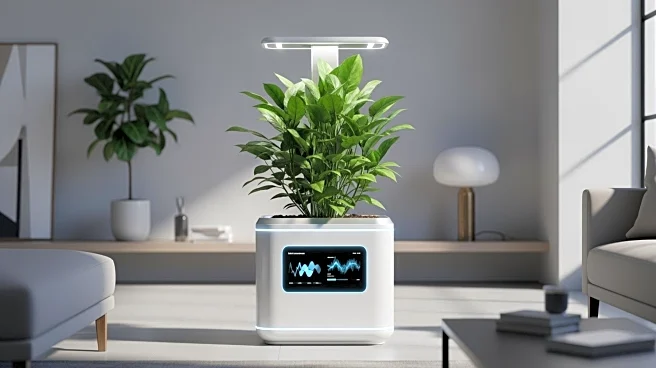What's Happening?
Atalanta Climate has developed the Ovi, an indoor carbon capture and air purification device designed to address both health and environmental concerns. The device, which uses a proprietary amine-based
ion-exchange resin, captures carbon dioxide from indoor air and converts it into calcium carbonate. This innovation is particularly relevant in areas affected by wildfires, where opening windows can pose health risks. The Ovi aims to reduce indoor CO2 levels, which can impact cognitive function and health, especially for individuals with pre-existing conditions. The device is set to be delivered to a leading U.S. university in January, with consumer versions available for pre-order.
Why It's Important?
The introduction of the Ovi device is significant as it addresses the growing need for effective indoor air purification, especially in regions prone to wildfires and high pollution levels. By reducing indoor CO2 levels, the device can improve health outcomes and cognitive function, which is crucial for workplaces and educational institutions. Additionally, the device offers a sustainable solution by being carbon-negative, potentially reducing energy consumption associated with traditional ventilation systems. This innovation represents a step forward in tackling climate change and improving indoor air quality, benefiting both public health and environmental sustainability.
What's Next?
Atalanta Climate plans to deliver initial units to universities and corporate offices, with a consumer version set for release in April 2026. The company aims to develop integrated systems for water, air, and carbon removal, and is working on carbon-neutral shipping. As the device gains traction, it may lead to broader adoption in various sectors, including education and corporate environments, enhancing sustainability efforts and health standards. The ongoing development and iteration of the product suggest potential for further innovations in indoor air quality management.
Beyond the Headlines
The Ovi device highlights the intersection of technology and environmental health, showcasing how innovative solutions can address specific challenges posed by climate change. It serves as an example of how collaboration between different fields can lead to effective solutions, prompting consideration of other areas where similar approaches could be applied. The focus on customer-centric technology underscores the importance of addressing real-world impacts of climate change on human health and productivity.











